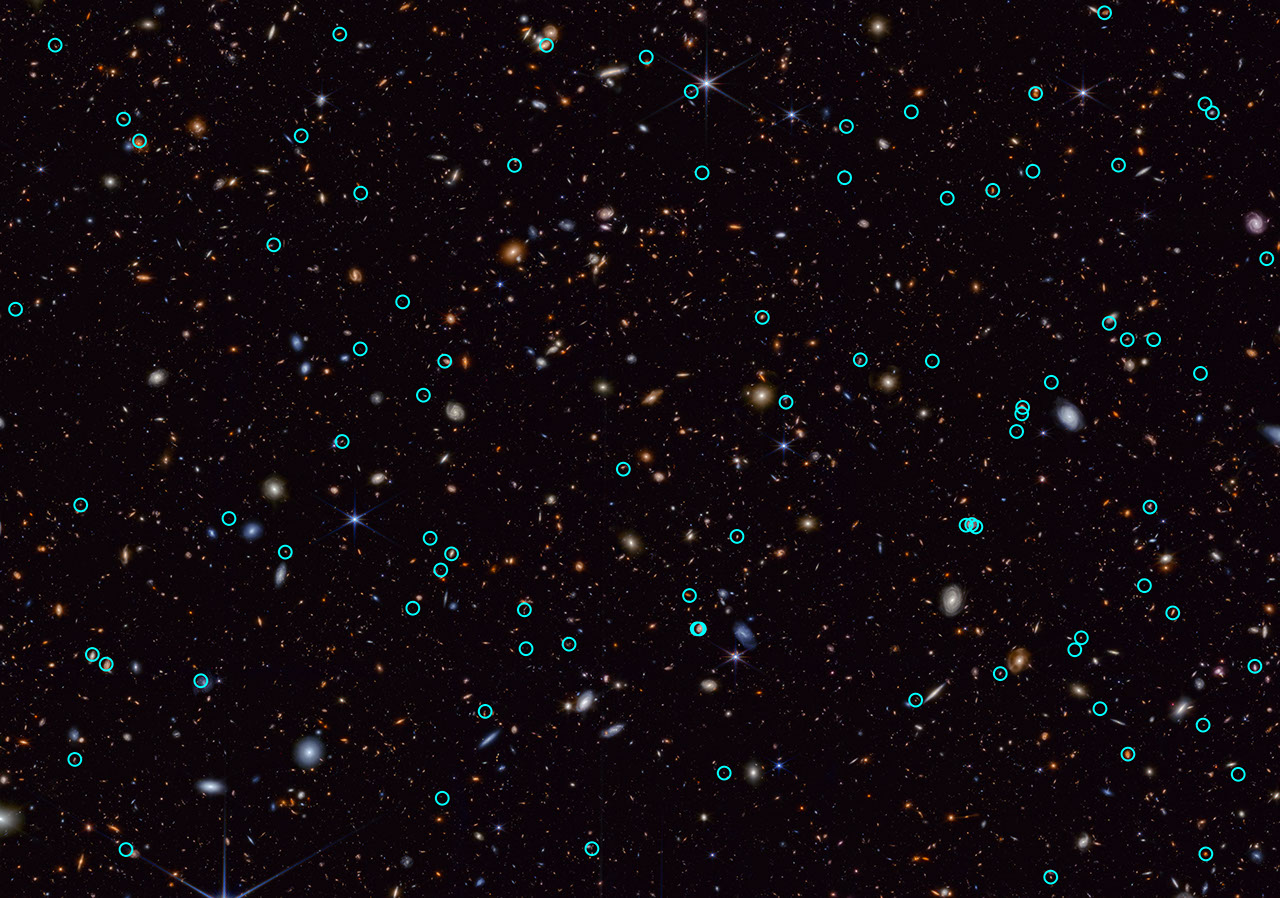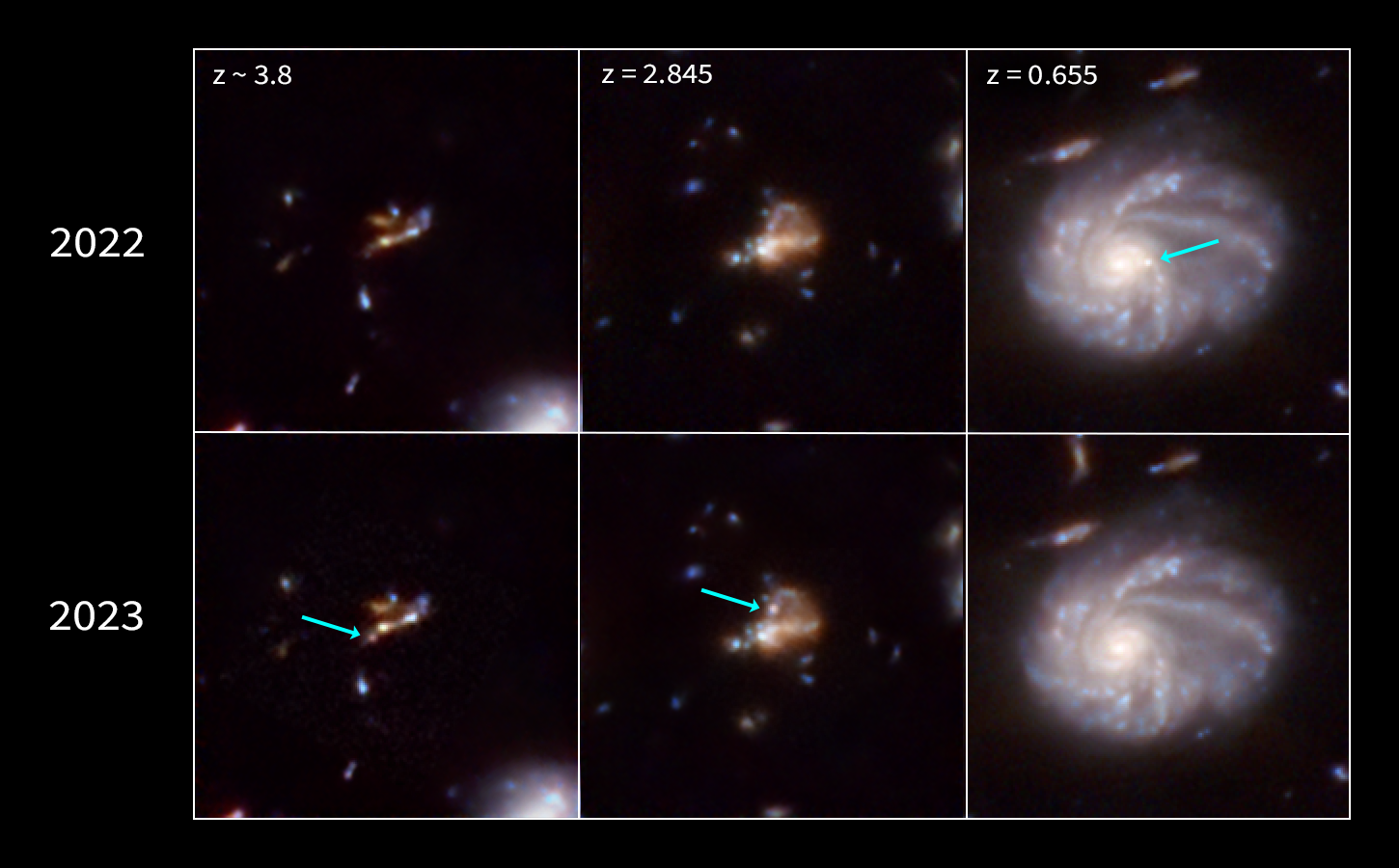1 min read
JADES Transient Survey (NIRCam Image)

The JADES Deep Field uses observations taken by NASA’s James Webb Space Telescope (JWST) as part of the JADES (JWST Advanced Deep Extragalactic Survey) program. A team of astronomers studying JADES data identified about 80 objects (circled in green) that changed in brightness over time. Most of these objects, known as transients, are the result of exploding stars or supernovae.
Prior to this survey, only a handful of supernovae had been found above a redshift of 2, which corresponds to when the universe was only 3.3 billion years old — just 25% of its current age. The JADES sample contains many supernovae that exploded even further in the past, when the universe was less than 2 billion years old. It includes the farthest one ever spectroscopically confirmed, at a redshift of 3.6. Its progenitor star exploded when the universe was only 1.8 billion years old.
About the Object
- R.A. PositionR.A. PositionRight ascension – analogous to longitude – is one component of an object's position.03:32:36.89
- Dec. PositionDec. PositionDeclination – analogous to latitude – is one component of an object's position.-27:46:49.33
- ConstellationConstellationOne of 88 recognized regions of the celestial sphere in which the object appears.Fornax
- DimensionsDimensionsThe physical size of the object or the apparent angle it subtends on the sky.Image is about 6 arcminutes across
About the Data
- Data DescriptionData DescriptionProposal: A description of the observations, their scientific justification, and the links to the data available in the science archive.
Science Team: The astronomers who planned the observations and analyzed the data. "PI" refers to the Principal Investigator.This image was created with Webb data from proposal: 1180 (D. Eisenstein)
- InstrumentInstrumentThe science instrument used to produce the data.NIRCam
- Exposure DatesExposure DatesThe date(s) that the telescope made its observations and the total exposure time.29 Sept. - 10 Oct. 2022
- FiltersFiltersThe camera filters that were used in the science observations.F090W, F115W, F150W, F200W, F277W, F335M, F356W, F410M, F444W
- Object NameObject NameA name or catalog number that astronomers use to identify an astronomical object.JWST Advanced Deep Extragalactic Survey, GOODS-S
- Object DescriptionObject DescriptionThe type of astronomical object.Deep Field Survey
- Release DateJune 10, 2024
- Science ReleaseNASA’s Webb Opens New Window on Supernova Science
- CreditImage: NASA, ESA, CSA, STScI, JADES Collaboration
Downloads

These images are a composite of separate exposures acquired by the James Webb Space Telescope using the NIRCam instrument. Several filters were used to sample wide wavelength ranges. The color results from assigning different hues (colors) to each monochromatic (grayscale) image associated with an individual filter. In this case, the assigned colors are: Blue: F090W + F115W + F150W Green: F200W + F277W + F335M Red: F356W + F410M + F444W

Related Images & Videos

JADES Transients (NIRCam Image)
This mosaic displays three of about 80 transients, or objects of changing brightness, identified in data from the JADES (JWST Advanced Deep Extragalactic Survey) program. Most of the transients are the result of exploding stars or supernovae. By comparing images taken in 2022...
Share
Details
Laura Betz
NASA’s Goddard Space Flight Center
Greenbelt, Maryland
laura.e.betz@nasa.gov
NASA, ESA, CSA, STScI, JADES Collaboration






























